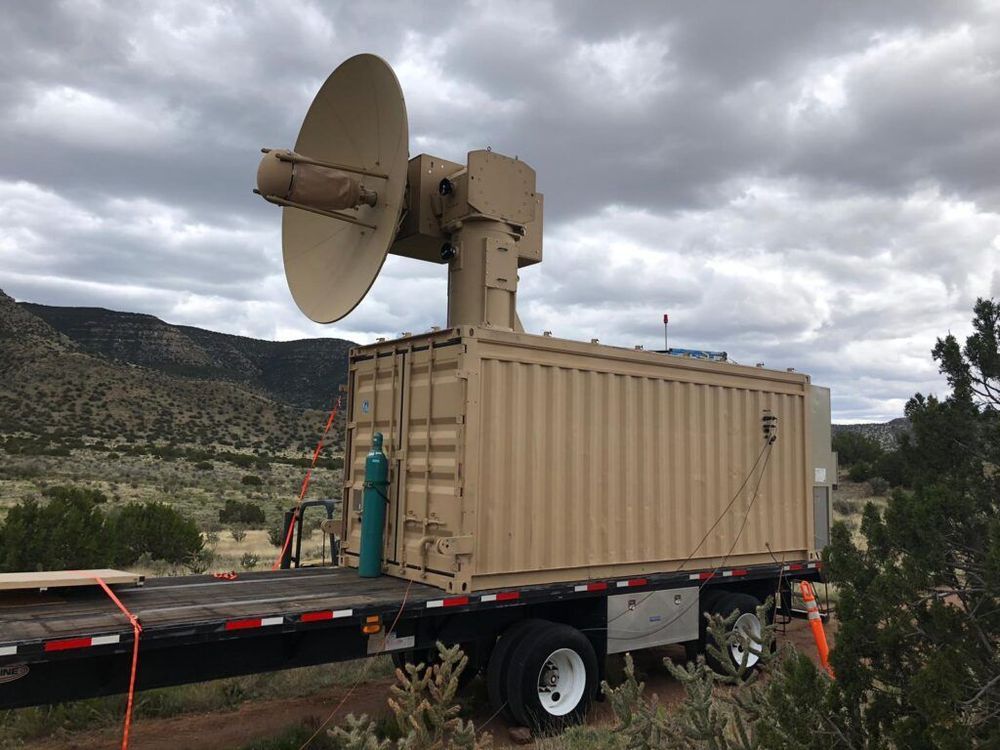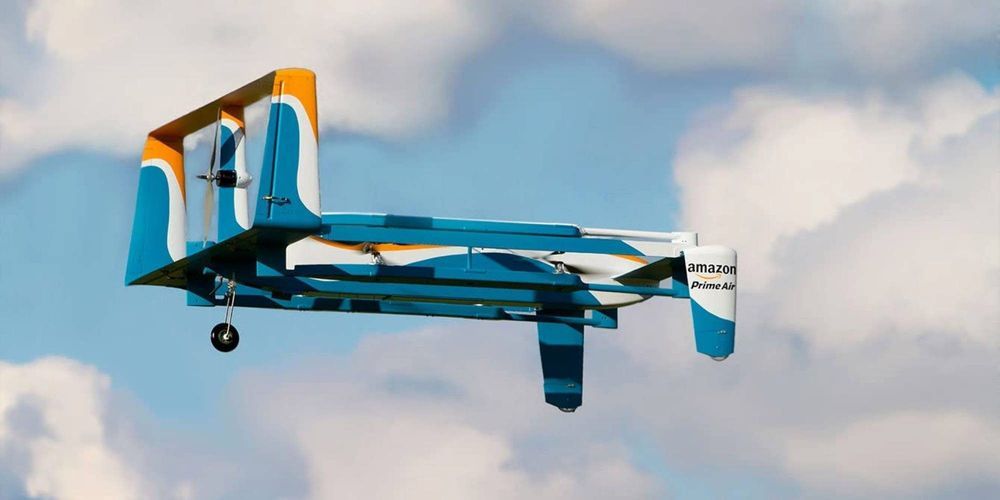THOR puts high-powered microwaves to fry drone swarms’ electronics in a rugged and deployable package.


The tactic has become widespread on battlefields overseas and now appears to be proliferating to organized crime.

Amazon’s latest drone patent points at a new way of using a drone that doesn’t involve delivering packages. Amazon wants to replace ski lifts. The drone uses a rope to pull people up the side of a mountain, just like Casey Neistat did in this video in December 2016.

💥💥💥💥💥💥💥Humanitarian Day, the UK Space Agency announced £3.4 million of new funding for 10 leading-edge projects, backing UK academics using space to tackle global development problems – from the spread of malaria to human trafficking and forced labor. In 2018, there were an estimated 228 million cases and 405,000 deaths from malaria alone.
These projects will develop solutions to global challenges that will open up new opportunities for UK space expertise to help countries overseas to deal with myriad problems. Among the others being backed are space-based solutions that will help protect wildlife habitats in Kenya and another that will improve resilience to flooding in Bangladesh, which is suffering the most prolonged monsoon rains in decades.
On World Humanitarian Day, the UK Space Agency announced £3.4 million of new funding for 10 leading-edge projects, backing UK academics using space to tackle global development problems – from the spread of malaria to human trafficking and forced labor. In 2018, there were an estimated 228 million cases and 405,000 deaths from malaria alone.
Using satellite, air-borne and ground-based sensing technology, academics at The Open University will detect where mosquitoes are most likely to breed, and support efforts to tackle this deadly disease at its source. Once identified, ‘sprayer drones’ will release biocontrol agents that will kill mosquito larvae without affecting other species, as part of the DETECT project.
Uganda is a source and destination country for men, women, and children trafficked for the purposes of forced labor and sexual exploitation. A project backed by the cash injection announced today will see UK academics at the University of Nottingham apply Earth observation technology from satellites to Uganda’s anti-human trafficking and forced labor efforts.

Ahead of a likely ban on the US federal government’s use of Chinese-made quadcopters, including popular DJI drones, the Department of Defense has approved the products of five US-based unmanned air vehicle (UAV) makers for government use.
Those companies are Altavian, Parrot, Skydio, Teal and Vantage Robotics.
Small UAVs from these manufacturers have been deemed cyber-secure by the Pentagon – not vulnerable to backdoor spying that some suspect might be possible from the video cameras and other sensors attached to Chinese-made DJI drones. The US Congress is considering banning the US federal government from using foreign-made drones as part of its 2021 National Defense Authorization Act.
Amazon isn’t just thinking about delivery with its drones.
The new patent made public this week reveals an idea for a drone-powered towing system designed for skiers, surfers, skaters, and more.
“While there are various known uses for unmanned aerial vehicles, certain techniques for controlling the unmanned aerial vehicles are relatively limiting with respect to other uses,” according to the patent filing, originally filed in June 2016. “For example, current hand-operated remote controls for automated aerial vehicles are not conducive to users being able to operate the remote controls while simultaneously utilizing their hands for other purposes.”

By Elias Marat
Researchers for the U.S. Army are hoping to formulate a new shape-shifting material that can heal itself on its own in hopes to achieve the kind of futuristic killing technology famously depicted in the 1991 science-fiction film, Terminator 2.
In fact, the film’s villain, the T-1000, directly provided the inspiration to one of the Army engineers working on a project to develop “soft robotic” drones and unmanned aircraft based on flexible, self-repairing and self-reconfiguring materials, reports Military.com.
This approach to increasing capacity will be particularly important as robots shrink to the microscale and below—scales at which current stand-alone batteries are too big and inefficient.
“Robot designs are restricted by the need for batteries that often occupy 20% or more of the available space inside a robot, or account for a similar proportion of the robot’s weight,” said Nicholas Kotov, the Joseph B. and Florence V. Cejka Professor of Engineering, who led the research.
Applications for mobile robots are exploding, from delivery drones and bike-lane take-out bots to robotic nurses and warehouse robots. On the micro side, researchers are exploring swarm robots that can self-assemble into larger devices. Multifunctional structural batteries can potentially free up space and reduce weight, but until now they could only supplement the main battery.

Click on photo to start video.
The world’s first manned racing drone just took its first flight… Now, this is pod racing! 🙌 🤯
The terrorist or psychopath of the future, however, will have not just the Internet or drones—called “slaughterbots” in this video from the Future of Life Institute—but also synthetic biology, nanotechnology, and advanced AI systems at their disposal. These tools make wreaking havoc across international borders trivial, which raises the question: Will emerging technologies make the state system obsolete? It’s hard to see why not. What justifies the existence of the state, English philosopher Thomas Hobbes argued, is a “social contract.” People give up certain freedoms in exchange for state-provided security, whereby the state acts as a neutral “referee” that can intervene when people get into disputes, punish people who steal and murder, and enforce contracts signed by parties with competing interests.
The trouble is that if anyone anywhere can attack anyone anywhere else, then states will become—and are becoming—unable to satisfy their primary duty as referee.
In The Future of Violence, Benjamin Wittes and Gabriella Blum discuss a disturbing hypothetical scenario. A lone actor in Nigeria, “home to a great deal of spamming and online fraud activity,” tricks women and teenage girls into downloading malware that enables him to monitor and record their activity, for the purposes of blackmail. The real story involved a California man who the FBI eventually caught and sent to prison for six years, but if he had been elsewhere in the world he might have gotten away with it. Many countries, as Wittes and Blum note, “have neither the will nor the means to monitor cybercrime, prosecute offenders, or extradite suspects to the United States.”
Technology is, in other words, enabling criminals to target anyone anywhere and, due to democratization, increasingly at scale. Emerging bio-, nano-, and cyber-technologies are becoming more and more accessible. The political scientist Daniel Deudney has a word for what can result: “omniviolence.” The ratio of killers to killed, or “K/K ratio,” is falling. For example, computer scientist Stuart Russell has vividly described how a small group of malicious agents might engage in omniviolence: “A very, very small quadcopter, one inch in diameter can carry a one-or two-gram shaped charge,” he says. “You can order them from a drone manufacturer in China. You can program the code to say: ‘Here are thousands of photographs of the kinds of things I want to target.’ A one-gram shaped charge can punch a hole in nine millimeters of steel, so presumably you can also punch a hole in someone’s head. You can fit about three million of those in a semi-tractor-trailer. You can drive up I-95 with three trucks and have 10 million weapons attacking New York City. They don’t have to be very effective, only 5 or 10% of them have to find the target.” Manufacturers will be producing millions of these drones, available for purchase just as with guns now, Russell points out, “except millions of guns don’t matter unless you have a million soldiers. You need only three guys to write the program and launch.” In this scenario, the K/K ratio could be perhaps 3/1,000,000, assuming a 10-percent accuracy and only a single one-gram shaped charge per drone.
Will emerging technologies make the state system obsolete? It’s hard to see why not.